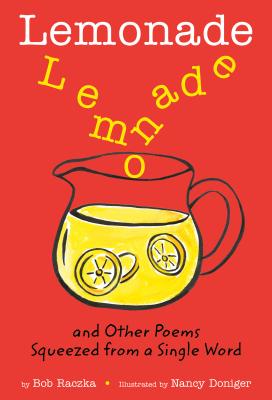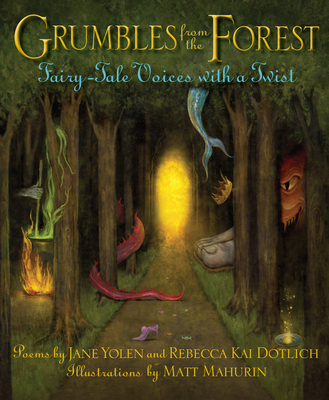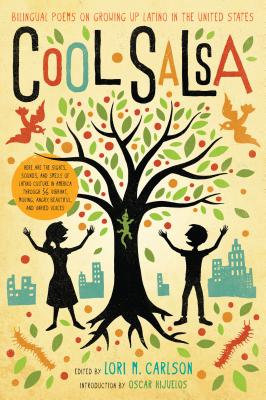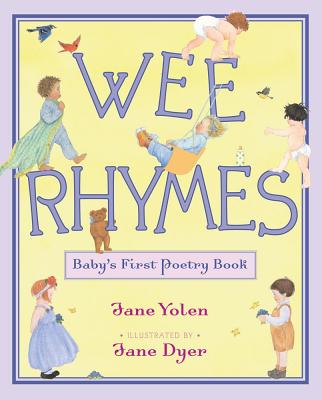Who are these “them” I’m talking about, and why do we want to tell them anything about poetry? “They” are so many of our nation’s readers, who confide in booksellers that they are afraid of poetry, or don’t like it, or don’t understand it. “They” are adults who were perhaps numbed by poor school assignments given by teachers equally unenthusiastic about poetry, or traumatized by their own bad school-age experiences with it. So the “they” in this post are also those teachers, dozens of whom over the years have confessed to me their secret dread of upcoming National Poetry Month units they are forced to teach in April. And “they,” too, are parents and librarians and older siblings who lead a pied-piper line of children away from poetry by example, avoiding it themselves. “They” are we, any of us who forget to read poetry or who privately love it but neglect to share it with readers as readily as we would share a novel we’ve fallen for. Honestly, if it weren’t for Shel Silverstein and Dr. Seuss, some people might never bump up against much poetry at all, and that would be a huge loss.
There’s a reason we choose poems for major occasions such as weddings and funerals, and it isn’t just that they’re concise. Poetry has a unique ability to capture a moment, a feeling, an occasion, or an idea, and to distill it to its essence. Poetry also can be enormous fun. The poetry-avoidant among us have perhaps forgotten poetry’s early joys — the rolling, rollicking, lyrical sounds and playfulness of language. Who can resist A.A. Milne’s “Disobedience” in When We Were Very Young, which begins:
James James
Morrison Morrison
Weatherby George Dupree
Took great
Care of his Mother,
Though he was only three.
James James
Said to his Mother,
“Mother,” he said, said he:
“You must never go down to the end of the town,
if you don’t go down with me.”
Or Margaret Mahy’s mesmerizing 17 Kings and 42 Elephants, the first lines of which are:
Seventeen kings on forty-two elephants
Going on a journey through a wild wet night,
Baggy ears like big umbrellaphants,
Little eyes a-gleaming in the jungle light.
Or James Marshall’s exuberant Piggy in the Puddle, a racing tongue-twister of a poem that reduces five-year-olds to helpless giggles. It begins:
See the piggy,
See the puddle,
See the muddly little puddle.
See the piggy in the middle
Of the muddy little puddle.
See her dawdle, see her diddle
In the muddy, muddy middle.
See her waddle, plump and little,
In the very merry middle.
So how do we remind metrophobes (poetry phobia is so common a phenomenon they’ve given it a name), and ourselves, about poetry? Although April is certainly not the only time we should be pulling great poetry off the shelves for readers, it sure is a terrific start. Here are some recent releases that should draw in even the most uncertain readers. Enjoy!
 Follow Follow: A Book of Reverso Poems by Mariiyn Singer; illustrated by Josée Masse (Dial, 9780803737693) This companion book to Mirror Mirror follows the same utterly magical pattern: side-by-side poems tell a familiar fairy or nursery tale from two points of view. The magical part is that the second poem uses exactly the same words as the first, but in reverse order. For Singer to be able to pull this off is just amazing. This is a terrific one to use with students, especially in grades 4 up through high school. The older kids can try writing “reversos,” a poetry form created by Singer. How wild is it that someone in our lifetime created a viable new poetic form?
Follow Follow: A Book of Reverso Poems by Mariiyn Singer; illustrated by Josée Masse (Dial, 9780803737693) This companion book to Mirror Mirror follows the same utterly magical pattern: side-by-side poems tell a familiar fairy or nursery tale from two points of view. The magical part is that the second poem uses exactly the same words as the first, but in reverse order. For Singer to be able to pull this off is just amazing. This is a terrific one to use with students, especially in grades 4 up through high school. The older kids can try writing “reversos,” a poetry form created by Singer. How wild is it that someone in our lifetime created a viable new poetic form?
 Speaking of new poetic forms, poet Bob Raczka has also spun something new in Lemonade: And Other Poems Squeezed from a Single Word, recently released in paperback and illustrated by Nancy Doniger (Square Fish, 9781250018946). The author of this collection was inspired by the work of experimental concrete/visual poet, endwar (aka Andrew Russ). The result is marvelous. For each poem, Raczka takes a single word and creates a poem out of only letters found in that word. But that’s only the tip of the iceberg here. These poems also contain riddle, puzzle, and visual elements. The concept is deceptively simple; to do it as well as Raczka does takes a true poet. This is a fantastic book for teachers to grab; kids’ imaginations will be ignited by the linguistic and visual possibilities inherent in a single word.
Speaking of new poetic forms, poet Bob Raczka has also spun something new in Lemonade: And Other Poems Squeezed from a Single Word, recently released in paperback and illustrated by Nancy Doniger (Square Fish, 9781250018946). The author of this collection was inspired by the work of experimental concrete/visual poet, endwar (aka Andrew Russ). The result is marvelous. For each poem, Raczka takes a single word and creates a poem out of only letters found in that word. But that’s only the tip of the iceberg here. These poems also contain riddle, puzzle, and visual elements. The concept is deceptively simple; to do it as well as Raczka does takes a true poet. This is a fantastic book for teachers to grab; kids’ imaginations will be ignited by the linguistic and visual possibilities inherent in a single word.
 Grumbles from the Forest: Fairy-Tale Voices with a Twist by Jane Yolen and Rebecca Kai Dotlich; illustrated by Matt Mahurin (WordSong, 9781590788677) These two poets tackle 15 familiar fairy tales and nursery stories, offering a duet of poems for each. Usually, the fairy tale is commented upon by two different characters in the story — the frog and the princess, for example — but sometimes, one character voices both poems in different moods, such as the troll from The Three Billy Goats Gruff, whose paired poems represent the before and after of the tale. This is definitely a book for the slightly older child, perhaps ages 10 and up. The art is bold, vivid, and sometimes haunting. This is an interesting concept that will translate very well into classrooms!
Grumbles from the Forest: Fairy-Tale Voices with a Twist by Jane Yolen and Rebecca Kai Dotlich; illustrated by Matt Mahurin (WordSong, 9781590788677) These two poets tackle 15 familiar fairy tales and nursery stories, offering a duet of poems for each. Usually, the fairy tale is commented upon by two different characters in the story — the frog and the princess, for example — but sometimes, one character voices both poems in different moods, such as the troll from The Three Billy Goats Gruff, whose paired poems represent the before and after of the tale. This is definitely a book for the slightly older child, perhaps ages 10 and up. The art is bold, vivid, and sometimes haunting. This is an interesting concept that will translate very well into classrooms!
 Poems to Learn by Heart, collected by Caroline Kennedy; paintings by Jon J Muth (Disney Hyperion, 9781423108054) Some years ago, I had a great friend, Wayne, who made a habit of learning poems by heart. I think he memorized one per week. He extended the same invitation to me, and for a while I kept pace with him. It was an oddly exhilarating challenge. There is something so satisfying about being able to call up lines that speak to the soul; the expression “by heart” I think comes from the ancient Greek belief that the heart was responsible not only for emotion, but for memory and intelligence. I still have some of these poems in memory, along with loads of verses and scattered lines, and of course countless favorite little poems and nursery rhymes from childhood. Caroline Kennedy’s collection gathers more than 100 poems for memorizing, arranged into 10 themes that cover every topic from nature to sports to school to war to nonsense poems. They range from very short to quite long — a lifelong addition to a family’s library. Several performance-friendly classics you might anticipate are here, such as Casey at the Bat and The Cremation of Sam McGee, along with some less-expected entries, like the timelessly, sublimely poetic Gettysburg Address.
Poems to Learn by Heart, collected by Caroline Kennedy; paintings by Jon J Muth (Disney Hyperion, 9781423108054) Some years ago, I had a great friend, Wayne, who made a habit of learning poems by heart. I think he memorized one per week. He extended the same invitation to me, and for a while I kept pace with him. It was an oddly exhilarating challenge. There is something so satisfying about being able to call up lines that speak to the soul; the expression “by heart” I think comes from the ancient Greek belief that the heart was responsible not only for emotion, but for memory and intelligence. I still have some of these poems in memory, along with loads of verses and scattered lines, and of course countless favorite little poems and nursery rhymes from childhood. Caroline Kennedy’s collection gathers more than 100 poems for memorizing, arranged into 10 themes that cover every topic from nature to sports to school to war to nonsense poems. They range from very short to quite long — a lifelong addition to a family’s library. Several performance-friendly classics you might anticipate are here, such as Casey at the Bat and The Cremation of Sam McGee, along with some less-expected entries, like the timelessly, sublimely poetic Gettysburg Address.
 World Rat Day: Poems About Real Holidays You’ve Never Heard of by J. Patrick Lewis; illustrated by Anna Raff (Candlewick, 9780763654023) Twenty-six poems celebrate 22 holidays, including “Bulldogs Are Beautiful Day,” “Frog Jumping Day,” “Dragon Appreciation Day,” “Chocolate-Covered Anything Day,” “International Cephalopod Awareness Day,” “National Sloth Day,” and the Flying Pig’s official favorite holiday, “National Pig Day.” These mostly short poems are clever; most have sly puns, sophisticated language, or cultural references that may need explaining to younger children. Not to worry, however; the kids will be so taken by the silly illustrations they won’t mind if they miss a reference or two. Older siblings will get a kick out of explaining unfamiliar things to their younger brothers and sisters, and will appreciate the humor of the language and the holidays themselves.
World Rat Day: Poems About Real Holidays You’ve Never Heard of by J. Patrick Lewis; illustrated by Anna Raff (Candlewick, 9780763654023) Twenty-six poems celebrate 22 holidays, including “Bulldogs Are Beautiful Day,” “Frog Jumping Day,” “Dragon Appreciation Day,” “Chocolate-Covered Anything Day,” “International Cephalopod Awareness Day,” “National Sloth Day,” and the Flying Pig’s official favorite holiday, “National Pig Day.” These mostly short poems are clever; most have sly puns, sophisticated language, or cultural references that may need explaining to younger children. Not to worry, however; the kids will be so taken by the silly illustrations they won’t mind if they miss a reference or two. Older siblings will get a kick out of explaining unfamiliar things to their younger brothers and sisters, and will appreciate the humor of the language and the holidays themselves.
 Cool Salsa: Bilingual Poems on Growing Up Latino in the United States, edited by Lori Marie Carlson, with an introduction by Oscar Hijuelos (Square Fish, 9781250016782). I’m so glad Square Fish has made this fabulous anthology available again, and in paperback! It’s a moving collection of poems for ages 8-12, about all kinds of experiences kids have growing up Latino in this country. The anthology received starred reviews and Best Books inclusion for good reason; authors like Alicia Gaspar de Alba, Ana Castillo, Sandra Cisneros, Martín Espada, Luis J. Rodríguez, and Gary Soto present a varied, eloquent look at childhood and culture that will resonate with so many young people. The poems are presented in both English and Spanish.
Cool Salsa: Bilingual Poems on Growing Up Latino in the United States, edited by Lori Marie Carlson, with an introduction by Oscar Hijuelos (Square Fish, 9781250016782). I’m so glad Square Fish has made this fabulous anthology available again, and in paperback! It’s a moving collection of poems for ages 8-12, about all kinds of experiences kids have growing up Latino in this country. The anthology received starred reviews and Best Books inclusion for good reason; authors like Alicia Gaspar de Alba, Ana Castillo, Sandra Cisneros, Martín Espada, Luis J. Rodríguez, and Gary Soto present a varied, eloquent look at childhood and culture that will resonate with so many young people. The poems are presented in both English and Spanish.
 Pocket Poems selected by Bobby Katz; illustrated by Marylin Hafner (Puffin, 9780147508591) Newly released in paperback, this collection packs 53 bite-sized poems and an author’s note into its 32 pages. There’s a nice variety of both rhyme and free verse, and represented authors include Emily Dickinson, nikki giovanni, Jack Prelutsky, Carl Sandburg, Gwendolyn Brooks, and other poet luminaries, along with equally worthy but less well-known authors. This is a fun book with lively artwork for ages 5+. One sample I have to share, “Lunchbox,” is from the inimitable Valerie Worth (whose all the small poems and fourteen more, illustrated by Natalie Babbitt, should be in everyone’s library!):
Pocket Poems selected by Bobby Katz; illustrated by Marylin Hafner (Puffin, 9780147508591) Newly released in paperback, this collection packs 53 bite-sized poems and an author’s note into its 32 pages. There’s a nice variety of both rhyme and free verse, and represented authors include Emily Dickinson, nikki giovanni, Jack Prelutsky, Carl Sandburg, Gwendolyn Brooks, and other poet luminaries, along with equally worthy but less well-known authors. This is a fun book with lively artwork for ages 5+. One sample I have to share, “Lunchbox,” is from the inimitable Valerie Worth (whose all the small poems and fourteen more, illustrated by Natalie Babbitt, should be in everyone’s library!):
They always
End up
Fighting—
The soft
Square
Sandwich,
The round
Heavy
Apple.

Wee Rhymes: Baby’s First Poetry Book by Jane Yolen; illustrated by Jane Yolen (Simon & Schuster/Paula Wiseman, 9781416948988) Years ago, Jane Dyer illustrated one of our favorite anthologies: Animal Crackers: A Delectable Collection of Pictures, Poems, and Lullabies for the Very Young (Little, Brown 9780316197663), so I was delighted to see her lovely artwork show up in this new collection by Jane Yolen. Both Janes have grandchildren, and a sweet “Note from Two Grandmothers” opens the book, which features little verses perfect for the everyday experiences of babies and toddlers. Most are written by Yolen, though there are some Mother Goose rhymes within as well. I was happy to see a diverse cast of characters: happy little people in all shades of skin color and hair type. This is an anthology of happiness.


This lovely post from
Elizabeth Bluemle is
Poetry for all readers.
Some of my favorite poets! Thanks for sharing such a great list.
It’s not written in verse – at least I don’t think it is – but Greg Pincus’s upcoming MG novel THE 14 FIBS OF GREGORY K has poetry at the heart of its story.
Hooray, Elizabeth! I love the way you remind people about the “the rolling, rollicking, lyrical sounds and playfulness of language.” Play is definitely the way back in to poetry for all the poetry-phobes out there. And I’m thrilled to see Bob Raczka’s LEMONADE on your list – it is so clever – a delightful book, the kind I read and say, “I wish I’d written that.”
I work at a public library and I’m the Youth Services person. I have been trying to figure out over the last few years how to incorporate poetry into PreSchool & Tiny Tots Story Times. While I use rhymes all the time, I have made several attempts with poems which didn’t seem successful the “crowd”. I have fond memories of poems that we had to memorize in Junior High. They were called memory selections and had to be recited in front of the class (very nerve racking!). I still lovingly remember bits & pieces of Flanders Fields, Birches, and Stopping by Woods on a Snowy Evening. Thanks for the heads up on the new titles. I’ll be adding some to our small rural library’s collection and sharing a few poems in April story times.
I’m so glad you shared the selection from The Piggy in the Puddle. It brought back memories from early childhood, when I watched LeVar Burton explain how they animated that story using claymation on Reading Rainbow. Even better, pigs have always been my favorite animals.
World Rat Day is so great! Love Anna Raff!
Thanks for highlighting these books, Elizabeth, and encouraging teachers and others to celebrate poetry with kids. The new poetic forms are exciting, and I think poetry that riffs of from known stories and characters carries the appeal of familiarity and therefore may be very accessible.
I’d wager that “They” are readers burnt one time too many by poets and poetry with no sense of fun, unlike the examples given here. ‘Adult’ poetry is all too often convinced of its own greatness before it has even made proper introductions to the reader.
I have an article in Books for Keeps on very young children and verse specifically nursery rhymes. it’s never too young to introduce verse – and of course they love it. I also have encountered many university students, even teachers-to-be, who hated poetry because they were frightened by it – because they themselves had been taught by teachers who hated and feared it! http://booksforkeeps.co.uk/issue/193/childrens-books/articles/the-book-as-artefact-children%E2%80%99s-responses-to-nursery-rhymes